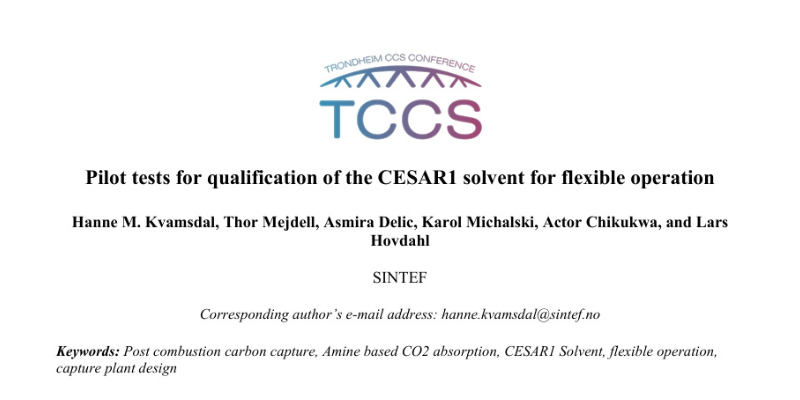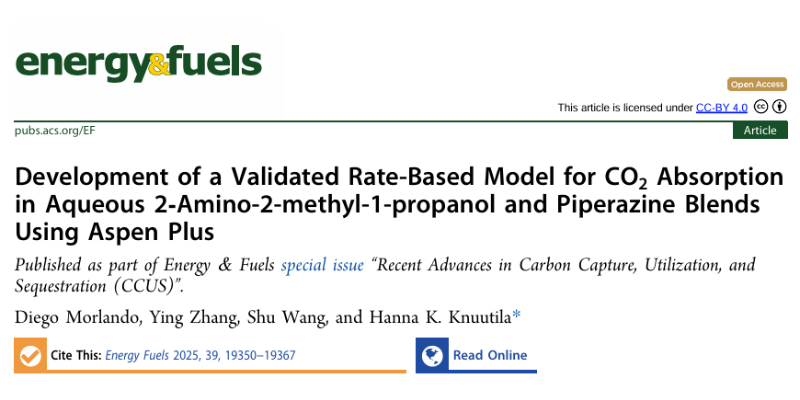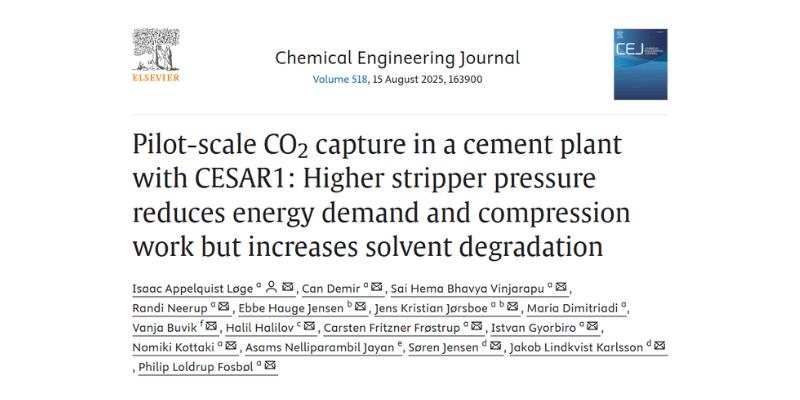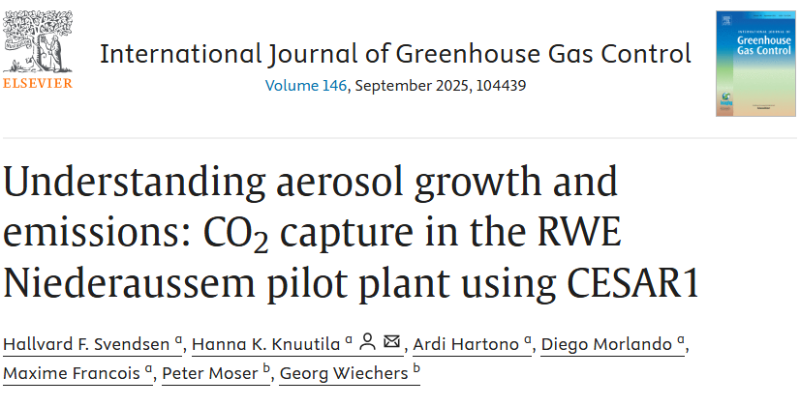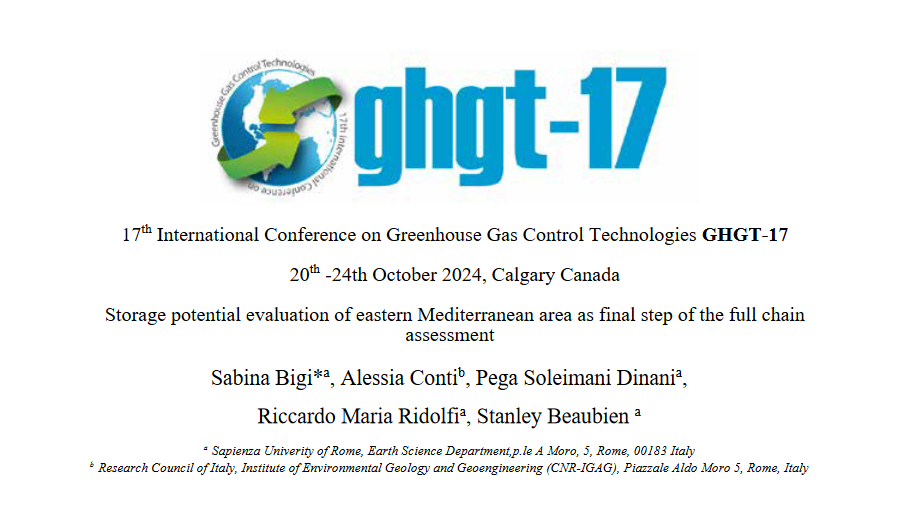Abstract
Many large-scale capture plants will need to be operated in a flexible and dynamic manner to cope with varying flow rates and/or CO2 concentration in the flue gas from the host plant. Under such circumstances, careful design of the capture plant is required, as well as proper process control to ensure the operating- and product specifications are met. These specifications mainly concern the CO2 capture rate, amine emission limits, and CO2 quality, but other requirements like minimising utility consumption (energy, process- and cooling water) and loss of solvent are also important. Valuable insight into the aspects contributing to the most optimal plant design is achieved from pilot testing combined with simulations. Despite the extensive testing over the last 20-30 years in a number of pilots of different sizes and at different locations, the focus on dynamic testing has been limited, particularly when the operating conditions approach the limits of the pilot plant.
Keywords: Post combustion carbon capture, Amine based CO2 absorption, CESAR1 Solvent, flexible operation, capture plant design.
Authors: Hanne M. Kvamsdal, Thor Mejdell, Asmira Delic, Karol Michalski, Actor Chikukwa, and Lars Hovdahl (SINTEF Industry).
Publication – Development of a Validated Rate-Based Model
Abstract In this work, we developed a new e-NRTL thermodynamic framework for CO2 absorption in aqueous mixtures of 2-amino-2-methyl-1-propanol (AMP)…
Publication – Pilot-scale CO2 capture in a cement plant with CESAR1
Abstract Carbon capture from hard-to-abate industries is essential. This study investigates the effect of stripper pressure on the performance of…
New Publication: Aerosol Modeling in CO2 absorption using CESAR1
We are proud to announce that Hallvard F. Svendsen, Hanna K. Knuutila, Ardi Hartono, Maxime Francois and Diego Morlando at…
Thermodynamic Properties of CO₂ Absorption in CESAR1 — Essential Data for Better Process Modelling
We are proud to announce a new scientific publication from the AURORA project, authored by Diego Morlando, Ardi Hartono and…
Journal Publication – In-Depth Study of CESAR1 Solvent Degradation Under CO₂ Capture Conditions
A new scientific publication based on research from the AURORA project has just been released in the journal Industrial &…
Conference publication – GHGT-17: Viscosity and Density data for the CESAR1 solvent
Abstract Global warming is a major issue that needs to be addressed and limited. The CESAR1 solvent blend has a…
Conference publication – GHGT-17: “Storage potential evaluation of eastern Mediterranean area as final step of the full chainassessment”
The final step in capturing and storing carbon dioxide (CO₂) emissions is geological storage, where CO₂ is injected deep underground…
Understanding Solvent Degradation in CO₂ Capture – CESAR1 Solvent Degradation in Pilot and Laboratory Scale
The fight against climate change requires innovative solutions, and one promising method is CO₂ capture and storage (CCS). CCS involves…
Turning Waste Into Opportunity: Thermal Reclamation Chemistry of Common Amine Solvents
CO2 capture technology is vital for reducing greenhouse gas emissions. But what happens when the chemicals used in this process…
Closing Knowledge Gaps – Density and Viscosity of Unloaded and CO2-loaded Aqueous AMP-PZ blends
AURORA’s latest scientific journal publication provides experimental density and viscosity data on different unloaded and CO2-loaded aqueous blends of 2-amino-2-methyl-1-propanol…

